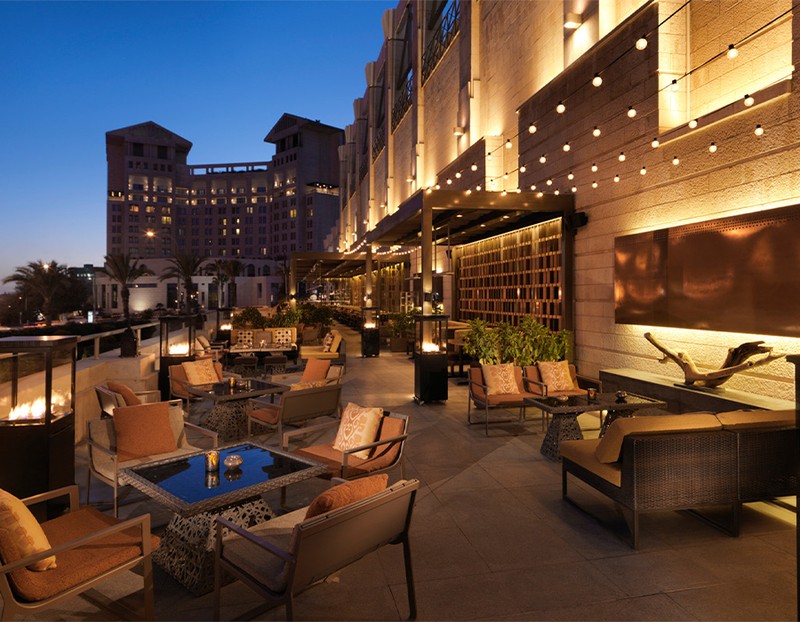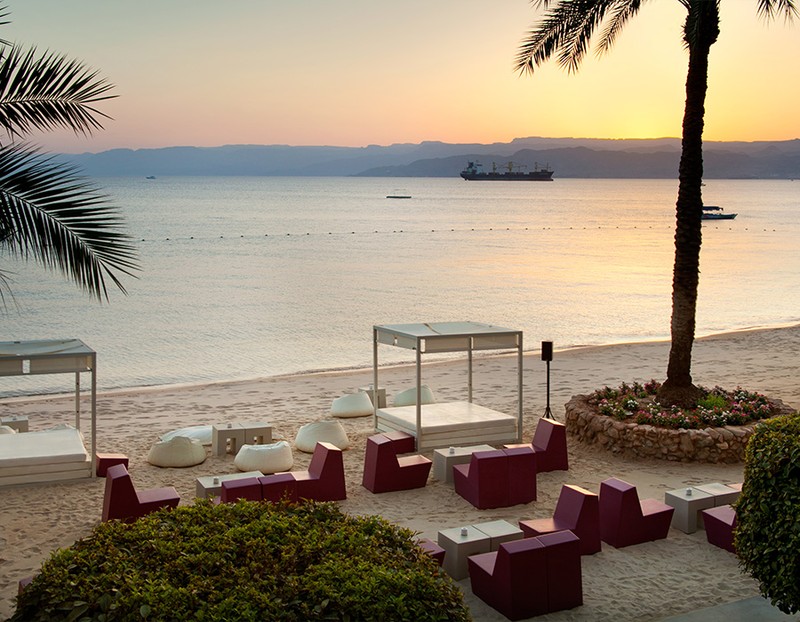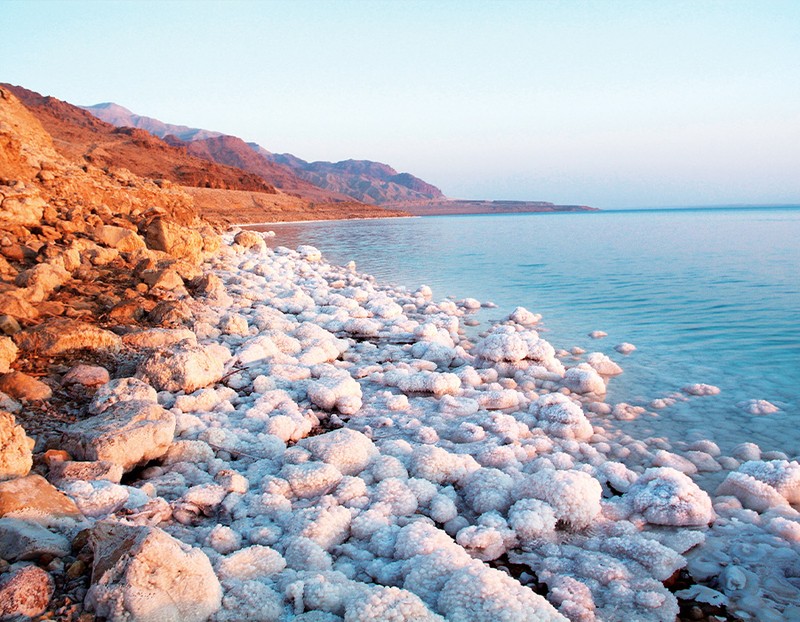
7 Reasons To Visit Jordan
It's easy to judge Jordan by the conflict in the countries around it, but it is one of the safest countries in the Middle East and only a five-and-a-half flight away. Of course, as a film scout’s paradise, we have seen its stunning scenery on countless occasions in Lawrence of Arabia, Indiana Jones and The Last Crusade, the recent Disney re-make of Aladdin and many more.
Debbie Flynn, chair of the Anglo Jordanian Society and representative for the Jordan Tourism Board in the UK, told us why this small country should be top of our list: “Jordan is well-known for the magnificent Petra, often called the Rose City and a truly magical place. The country offers travellers some wonderful natural wonders, including the salt-crusted shores of the Dead Sea, coral reefs in the Gulf of Aqaba and the towering rock formations over deep-red sands in the Wadi Rum desert. The bustling and cosmopolitan city of Amman is the perfect place to explore the traditional markets and eateries – foodies will love the hummus, fatoush, baba ganoush, tabbouleh, Shawarma and falafel. Further south, Aqaba has some amazing resorts to relax and unwind.”
Amman
International flights will bring you to the capital city where you’ll find ancient ruins, side by side with modern architecture and bustling streets. Many visitors skip staying here, but it is worth a day or two as there are many must-see attractions and things to do.
Must-sees: The impressive Citadel sits on the highest of the city’s seven hills, Jebel Al Qala'a, an area that has been inhabited since the Bronze Age and the ruins of a number of temples still remain. Other sites to visit are the Roman Amphitheatre, which was built in the 2nd century and can seat 6,000 people, and the Roman ruins of Jerash, just north of the city. Head downtown to Rainbow Street for buzzing bars, restaurants, markets and shops. You haven’t tried falafels and other local street food until you’ve eaten at the legendary Hashems – get there early to avoid the queues and expect plastic tables, no cutlery and no menu.
Where to stay – luxe for less: The Toledo Hotel is situated in the heart of Amman, on the edge of the old city centre and within a few minutes’ walk from an array of stylish cafés, restaurants and shops. Rooms have views over the blue-domed King Abdullah Mosque. You’ll also find a lap pool, steam rooms, exercise machines and a hot tub.
Where to stay – uber luxe: Atop the tallest of the hills, the Four Seasons is in a fabulous location where you’ll get the best city views from your room, especially if you book a deluxe executive suite with a balcony on the top floor. Relax by the Romanesque outdoor pool, which offers more panoramas of the city, while the hotel’s restaurants and bars are perfect for a bit of relaxation after a day’s sightseeing.
Petra
Four hours’ drive from Amman, you’ll arrive at the famous and awe-inspiring ruins of Petra, a UNESCO World Heritage Site and one of the New Seven Wonders of the World, and arguably the highlight of a visit to Jordan. The remains of this 2,000-year-old capital, which was carved into the rose-red sandstone mountains, was rediscovered in 1812 with large portions of the city intact. You should aim for a full day’s hike through the ruins, from the epic Treasury made famous by Indiana Jones, to elaborate mausoleums, holy temples and a Byzantine church with mosaic-tiled floors. Return after sunset to experience the ruins by candlelight when the Siq (the narrow entrance to the gorge) and forecourt of the Treasury are lit with thousands of candles.
Where to stay – luxe for less: The Petra Guest House is perfect if you’re after the best location in Petra on a reasonable budget. It's a stone's throw from the entrance to the site and has views of the sandstone mountains that hide the lost city. Rooms are simple but comfortably furnished, with many housed in chalets nestled in the property's stony grounds. The guesthouse has a certain laid-back charm that makes guests feel at home, and its Cave Bar, carved out of an ancient cave, is Petra's top spot for a quiet drink and local entertainment.
Where to stay – luxe: The Mövenpick is also ideally located bang opposite the entrance to the Petra site. The hotel is a mixture of Arabic and international design and, while the rooms do not perhaps have a huge amount of character, they are very comfortable and just what you need after a day trekking around the ancient ruins. You’ll find a good range of facilities, including an outdoor pool, gym and steam rooms, and a choice of seven restaurants. It is also within walking distance of Petra Kitchen (a fun place where you can learn to cook authentic local dishes), as well as the other bars and restaurants in the town.
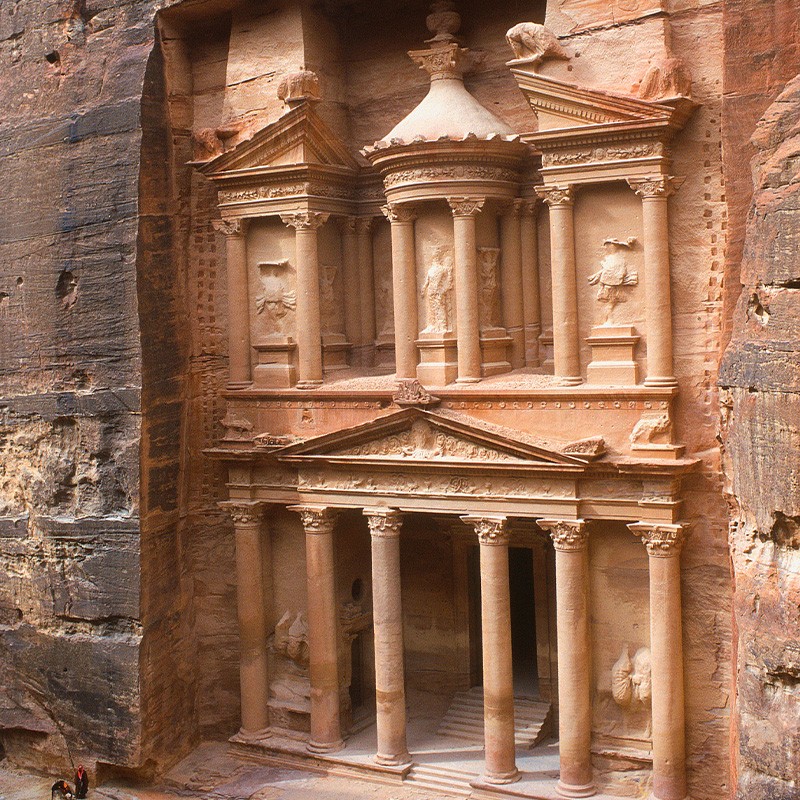
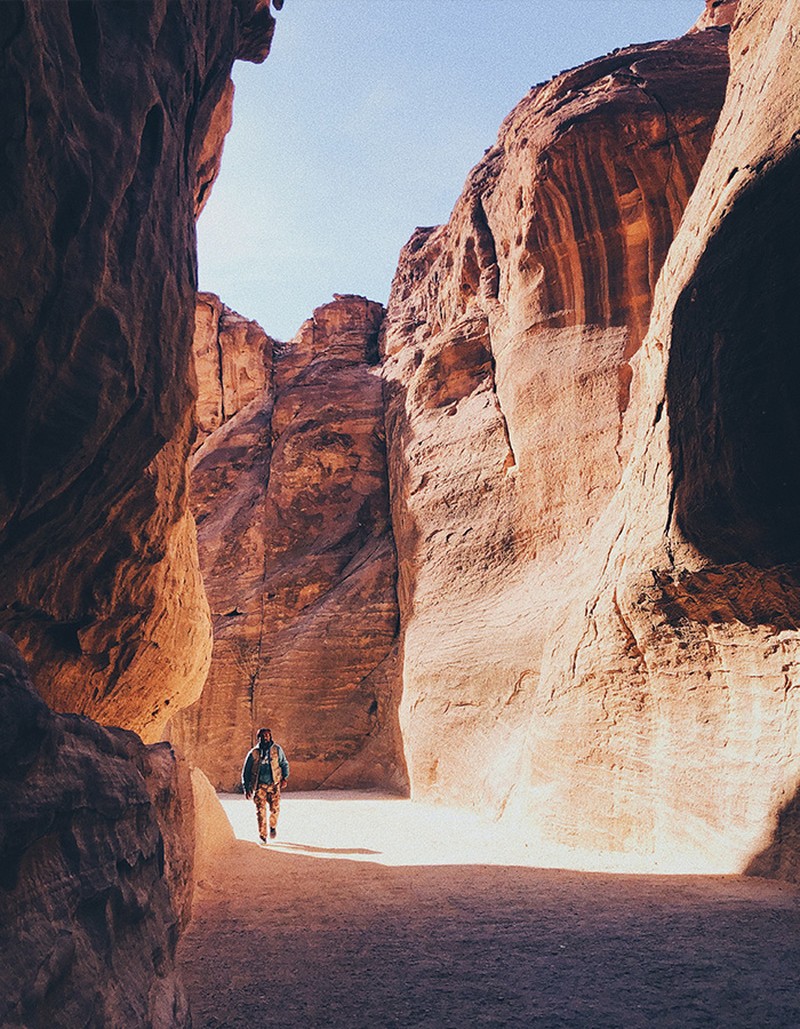
Wadi Rum
Wadi Rum, also known as The Valley of the Moon, is a spectacular desert located in the south west of the country. It was famously the base of T.E. Lawrence’s Arab Revolt of 1917-8 and was the location for the 1962 movie, Lawrence of Arabia. Close to Petra and Aqaba, it is possible to visit Wadi Rum as a day trip, but an overnight stay camping with the Bedouin is a great experience – you’ll get the full wonders of the desert and its dramatic, other-worldly scenery, with striking rock formations rising from the red and gold sand. The area is still inhabited by local Bedouins, although most of the community are no longer nomadic and now live in fixed villages.
Where to stay – luxe for less: Located just within the boundary of Wadi Rum is the Sun City Camp. The raised wooden ensuite chalets are covered with Bedouin tents, giving an authentic appearance. The large dining area is decorated with traditional carpets and low seating and a campfire is lit every evening. A traditional Bedouin meal is served after sunset, after which you can relax and enjoy the starry skies.
Where to stay – uber luxe: For a tranquil refuge from the desert sun, the remote and secluded Bespoke Hideaways Discovery Bedu has just six tastefully decorated tented suites, each with a comfortable king-size bed, ensuite bathroom with shower (with hot and cold running water – a rarity in the desert) and a private terrace overlooking the mesmerising land T.E Lawrence described as "vast, echoing and god-like". You’ll eat mouth-watering Bedouin dishes al fresco under the canopy of stars, with candles, torches and lanterns lighting up the sands; and breakfast is served on a nearby sandstone hill overlooking the desert views.
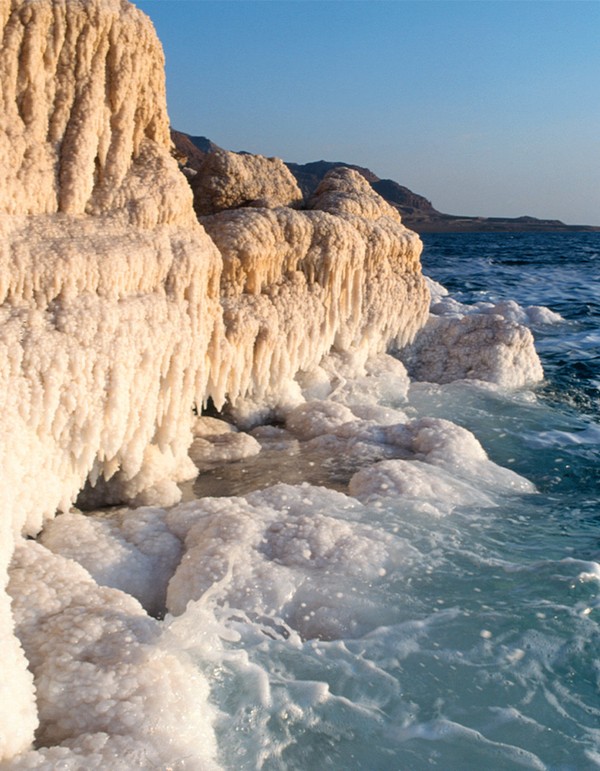
The Dead Sea
The Dead Sea (which is actually a lake) is just a 45-minute drive from the airport in Amman, so it’s a good place to wind down at the end of your trip. Reputed to have healing powers (for everything from psoriasis to wrinkles), the startlingly blue, salty waters have attracted visitors since ancient times, even before Cleopatra slathered herself in mud from the seabed. Because it’s so dense with dissolved salt, the lake is exceptionally buoyant and swimming here will give you a weightless sensation that’s unlike anywhere else. It is also a convenient base if you want to explore the nearby Mount Nebo, the mosaics at Madaba and the biblical site of Jesus' baptism in the Jordan River.
Where to stay – luxe for less: The Holiday Inn Resort is an ideal place to relax and rejuvenate. You’ll have the choice of four swimming pools on different tiers that gradually lead down to the private beach, where you’ll find a mud station so you can benefit from all the healing properties of the mud and salty waters. This is a comfortable resort, with contemporary décor, modern facilities and excellent service.
Where to stay – uber luxe: The Kempinski Ishtar overlooks the Dead Sea and is a totally serene place to unwind. There are nine freshwater swimming pools to choose from and the hotel's 300-metre private man-made beach has been built up with fine sand from the Red Sea. You can pass the day away by floating in the Dead Sea or relaxing in the spa's hydro pool, or even playing a game of tennis, or joining a yoga class.

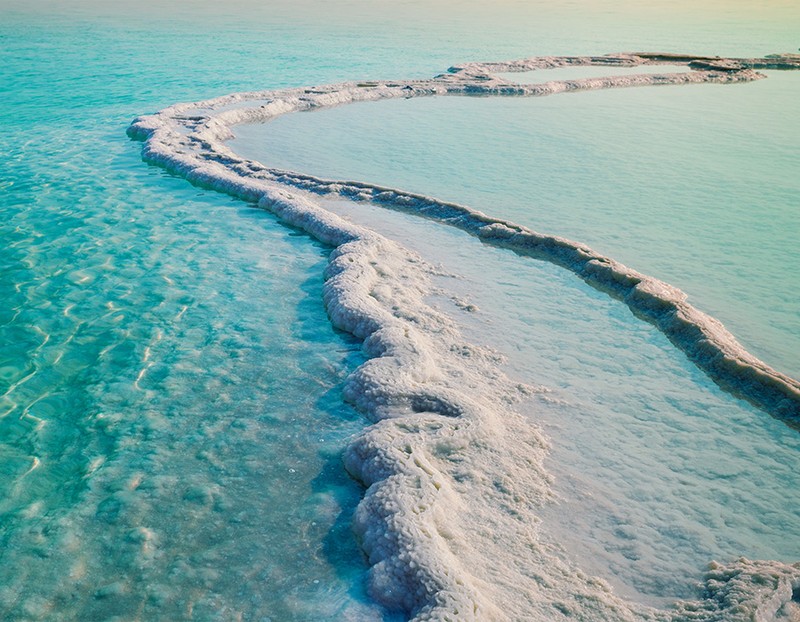
Dana Nature Reserve
For a bit of adventure and trekking off the beaten track, Dana is Jordan's largest nature reserve, measuring 320 square kilometres, where you’ll find deep wadis (valleys) and rugged mountains. It is still home to a number of local communities, dwelling in small camps and villages, as well as a variety of flora and very rare fauna, like the Syrian wolf and sand cat. The best way to explore the reserve is to venture through the wadis and along the craggy mountain paths following one of the many trekking trails. Dana Village sits at the top of the reserve and has been occupied since 4,000 BC.
Where to stay: Deep in the heart of the reserve, at the end of a rugged track, the idyllic Feynan Ecolodge nestles at the bottom of a valley. It is simple but perfectly comfortable and very charming, as well as a great base for hiking.
Madaba, Mount Nebo & Kerak Castle
Travelling from Amman to Petra along the King’s Way, you should stop at Madaba, a settlement dating back to the Bronze Age. Today, it is known for the many mosaics found in the remains of floors of private homes and public buildings, and is the site of the famed Byzantine mosaic map of the region. Nearby are Mount Nebo, from where Moses is said to have stood and looked to the Promised Land, and the stunning Crusader castle of Kerak, built in 1161. You can also visit these sites if you are staying at the Dead Sea.
Aqaba
Another place to unwind at the end of a week of sightseeing, but very different from the rest of Jordan, Ababa is perfect for a traditional beach holiday. Situated in the most southern part of Jordan and on the most northern tip of the Red Sea – from where on a clear day you can see Israel, Saudi Arabia and Egypt – you’ll find several large hotel resorts, golf courses, restaurants, bars and nightclubs here. The Red Sea, of course, is one of the best places in the world for diving and snorkelling. Aqaba is also close to Petra and Wadi Rum, so it’ a good base from which to visit these sites if you fancy staying by the sea.
Where to stay – luxe for less: Nestled against the Red Sea, the Al Manara is situated in the ancient port area of Aqaba, and offers a blend of modern amenities, elegant Arabic charm and excellent service. For R&R, grab some rays on the private beach or by the pool, or head to the spa. In the evening, the terrace overlooking the lagoon is a great spot for a drink and dinner with amazing views.
Where to stay – luxe: The Kempinski Aqaba is an elegant hotel, with views of the azure blue Red Sea from each of its airy white-washed rooms. It has a private beach and a very stylish pool with a number of different areas meaning you can do laps, lie in the shallows or enjoy a cocktail or two at the swim-up bar. The Aqua Lounge is the perfect place for a sundowner after which you can explore Aqaba’s nightlife, just a short stroll away.
When to go
Spring (March to May) and autumn (September to November) are the best times to visit Jordan, when temperatures are not too hot or too cold. The summer months (July and August) can get very hot, especially in the Jordan Valley and the desert. In winter it can get surprisingly cold, and snow can sometimes fall in Amman and Petra. Aqaba is the exception, with temperatures averaging around 20 degrees Celsius in January. Be aware of the month of Ramadan when there are restrictions on eating and drinking in public.
Suggested Itineraries
Luxe for less
Cox & Kings’ “Splendours of Jordan” 7-night tour picks out the best of Jordan’s cultural heritage and stunning landscapes. Visit the classical city of Jerash, the biblical site of Mount Nebo, Petra, Wadi Rum and the curative waters of the Dead Sea. Price from £2,195* per person (includes economy flights, accommodation, some meals, transfers, guided sightseeing and entrance fees. Click here for details or call 020 3813 9498.
Affordable luxury
Scott Dunn’s “Ultimate Jordan” 9-night tour includes Amman, Petra, the Dead Sea and Wadi Rum. Price from £3,800* per person (includes B&B, economy flights, private transfers and selected experiences). Click here for details or call 020 8682 5075.
Blow the budget luxury
Audley’s Middle East specialists recommend a luxury tailor-made 10-day tour which includes three nights in Amman with an excursion to Jerash and an Amman city tour; three nights in Petra with a tour of Petra and a guided Monastery hike from Little Petra to Petra; one night at Wadi Rum with a jeep tour; and two nights at the Dead Sea. Price from £10,950* (includes economy flights, private transfers, accommodation on a B&B basis, apart from Wadi Rum which is half board, and private excursions. Click here for more information or call 01993 838415.
*DISCLAIMER: Travel restrictions are changing daily, so please check the latest government advice before you book. Visit Gov.uk for more information.
DISCLAIMER: We endeavour to always credit the correct original source of every image we use. If you think a credit may be incorrect, please contact us at info@sheerluxe.com.
